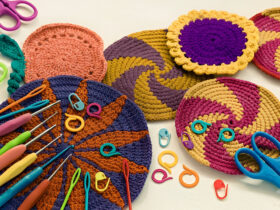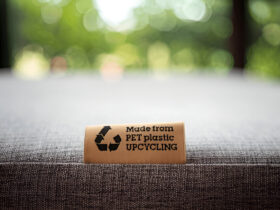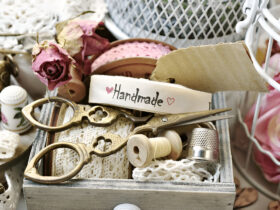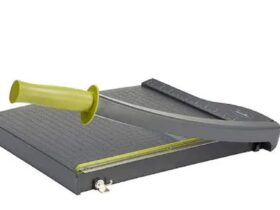Summer break is a perfect time to be creative with your kids or relax with your own hobbies. Whether you have a craft room, a small closet, or just a corner in the kitchen, organizing your supplies makes it easier and more fun to get started. A tidy space helps you enjoy how to organize craft supplies!
First, start with a clean slate. Take everything out of your drawers, bins, or shelves. This step may feel messy, but it helps you see exactly what you have. Group similar items like paper, paint, glue, ribbons, and markers together.
Next, declutter. Toss dried-out markers, scraps you’ll never use, or broken tools. If you haven’t used something in a year, it’s probably time to let it go.
Then, use clear bins or labeled containers to sort your supplies. Transparent storage helps you quickly see what’s inside. Labeling is especially helpful for kids’ crafts, so they can find (and return) their own items easily.
If you have limited space, try vertical storage like wall shelves, pegboards, or over-the-door organizers. Even a small cart can turn an unused corner into a functional craft station.

Finally, keep your most-used items in easy reach and store seasonal or rare items up high or in drawers.
A tidy craft space saves time and helps you make more things.
If you enjoy scrapbooking, painting, or crafting with your kids, these simple tips will help.
You’ll have a clean space that stays neat. Less mess, more fun!
Step 1: Empty and Edit – How to Organize Craft Supplies

Before you how to organize craft supplies, start by emptying everything. Yes, everything. If your craft supplies are spread across the house, gather them all in one spot. Whether it’s from closets, drawers, or bins, bringing them together helps you see what you really have.
Now it’s time to sort and edit. This part can feel tough — especially when you’re dealing with craft materials. After all, creativity often comes from using bits and pieces that seem useless to others.
Here’s the truth: If you haven’t used, touched, or thought about something in over a year, ask yourself this — will you really use it again?
Think about that old sewing machine you inherited but never used, or the Cricut vinyl you were once excited about but haven’t touched in years. It’s okay to let these things go. Donate craft supplies that still work, so others can enjoy them.
When it comes to kids’ crafts, the choices are usually simpler. Throw away dried-out markers, used-up coloring books, or old Play-Doh. You’ll be amazed how much space that clears. Keeping only the materials your kids still love makes it easier for them to be creative — and helps you stay clutter-free.

Be intentional,how to organize craft supplies It’s not about having less; it’s about keeping what matters. If your kids are into slime kits, Perler beads, kinetic sand, or bracelet looms, great! Just make sure it’s something they still enjoy.
Let your kids help decide what stays and what goes. This not only involves them in the process but also teaches them how to manage their own creative space.
In the end, less clutter means more room to create. And who doesn’t want a peaceful, inspiring craft area?
Step 2: Make a Plan and Contain – How to Organize Craft Supplies Effectively
Once you’ve finished decluttering, it’s time to make a plan for the items you’ve decided to keep. Think about where each category of craft supplies belongs. Do you want all supplies in one place, or will different materials stay in different rooms? Consider what worked before and what didn’t. Now’s your chance to create a smarter system that actually fits your space and your habits.
Start by choosing the right containers. Clear bins, pouches, and boxes make all the difference. But before that, one essential tip — ditch bulky packaging. Unless the box itself is useful (like a travel art kit), it’s usually taking up more space than necessary. For example, those odd-shaped boxes for a spirograph or science kit? Toss them. Transfer the contents into a medium zipper pouch and save space instantly.
You don’t need a hundred different organizers. Honestly, I mostly use just three things — lidded bins, open bins, and zipper pouches. These cover almost all your organizing needs.
Lidded Bins

Lidded bins are great for stackable storage and for separating supplies by category how to organize craft supplies. A few examples of what to store:
- Small accessory bins: crayons, googly eyes, beads
- Shoe bins: markers, flashcards, ribbon, thread
- Men’s shoe bins: acrylic paint, vinyl, craft kits
- Tall bins: glue, bottles, card sets
- Sweater bins: play-dough, party supplies, tissue paper
- Deep bins: fabric, large items, unfinished projects
- Under-the-bed boxes: gift wrap, large fabric rolls
- Jumbo bins: bulk craft materials
If you want opaque, stackable options, Nordic bins are a stylish pick. They come in limited sizes but work well if you’re organizing smaller supplies.
Open Bins
Open bins like multi-purpose or Shimo bins are great for holding scrapbook paper, coloring books, folders, and gift bags. You can also use them to keep zipper pouches in one place. They are helpful how to organize craft supplies, when you have many craft items but not enough room for each one.
White bins with handles are great if you want a clean look or need a smaller bin to fit in tight shelves. Choose the bin that fits your space best.
Zipper Pouches

I absolutely love zipper pouches for organizing craft supplies. They’re ideal how to organize craft supplies for separating pieces from craft kits and are great for taking things on the go. Whether it’s a face painting set, boondoggle, or bracelet-making kit, zipper pouches make it simple to grab and go. You can find budget options on Amazon or go for higher-quality ones from The Container Store.
Additional Organization Ideas
For everyday kid crafts, an acrylic caddy works wonders. Keep crayons, glue, scissors, and markers easily accessible. It’s a helpful tool for both kids and adults who want to craft regularly.
Wrapping paper is tricky, but a tall white trash bin works beautifully to store rolls vertically. Secure them with slap bracelets to prevent unrolling. If space allows, an under-bed box is a smart option. Or go stylish with a gift wrap wall rack from All Wrapped Up.
Got a project with tiny parts? Use bead box organizers. With multiple compartments, they’re perfect for sorting buttons, pins, or sequins.

If you’re lucky enough to have drawers, consider everything organizers or deep drawer dividers like those from iDesign. They keep tall items upright and visible.
For photo storage or flat items like cards, 5×7 photo boxes are an efficient and compact option.
If you have open shelving, get creative with your containers. Glass jars add charm while storing buttons, thread spools, or paint brushes. Prefer a cleaner look? Go for acrylic bins or hinged containers for fabric pieces and loose supplies.
Final Thoughts
How to organize craft supplies should be flexible and focus on function and creativity, not perfection. Use the right bins, keep things tidy, and organize small items to make the space more enjoyable. Plan your storage and keep it simple, so you can have fun crafting without the mess.
Step 3: Label Everything Clearly
Now that you’ve sorted and contained your craft supplies, the final touch is labeling. This simple step ensures everything stays in its place and saves time later. Whether you use printed labels, chalkboard tags, or even a piece of blue painter’s tape as a temporary fix — just label it.

Labeling turns a good system how to organize craft supplies into a great one. It makes your storage look clean and helps everyone know where things go. Even a basic label adds clarity and keeps your craft room organized and functional for the long run. Don’t skip this step — it truly makes a difference!
Step 4: Let the Crafting Begin
Now that everything is sorted, labeled, and stored, it’s time to enjoy your organized craft space! Whether it’s you or your kids diving into the supplies, a clean and tidy setup makes creativity so much more inviting. I like to do a quick reset of our craft area twice a year — once in the summer and again after Christmas. It usually takes just 15 minutes to check supplies, toss broken items, and craft room organization. But every time, that small reset leads to hours of happy crafting. It’s amazing how excited kids get when they rediscover forgotten treasures like foam stickers, slime kits, or beads.
One of the best parts about crafting is not just making things, but sharing them. So what do you do with the endless stream of boondoggle keychains, mini paintings, and paracord bracelets? Gift them! These handmade creations make thoughtful presents for friends, family, or even teachers. It’s a great way to teach kids about the joy of giving while also keeping your home from overflowing with finished projects.
Let this be the fun part. You’ve done the work to get organized—now let your space inspire more creativity, laughter, and hands-on learning. Whether it’s a rainy afternoon or a summer weekend, your craft room is now a place for memories to be made. So grab the glue sticks and let the crafting begin!
FAQ of How to Organize Craft Supplies
1. How do I begin organizing my craft supplies?
Start by clearing everything out of your craft area. Group similar items together, throw away anything broken or unused, and decide what you want to keep. This makes the next steps easier and more effective.
2. What containers work best for craft storage?
Use a combination of clear bins, open baskets, and zipper pouches. Clear bins help you see what’s inside, while zipper pouches are great for keeping kits and small parts organized.
3. How can I organize a small space for crafts?
Use shelves to save space, organize tools in drawers, and label containers for supplies. Keep only what you use regularly and switch out seasonal or extra items when needed.
4. Why is labeling important in craft organization?
Labeling helps you find items quickly and ensures everything has a place. It keeps the system easy to maintain, especially if multiple people use the space—like kids or family members.
5. How often should I clean or reorganize my craft supplies?
A quick reset every 6 months helps keep your space clutter-free. It’s a good time to restock favorites, toss out dried-up supplies, and make room for new items or gifts.
Conclusion: How to Organize Craft Supplies
Organizing your craft supplies is easy with a little planning. Use boxes or bins, clean up regularly, and sort items by type.
Whether you have a whole room or just a corner, clear containers and labels help keep things neat.
A tidy space makes it easier to find what you need, reduces stress, and makes crafting more fun. Start organizing today and enjoy crafting in a clutter-free space!











Leave a Reply